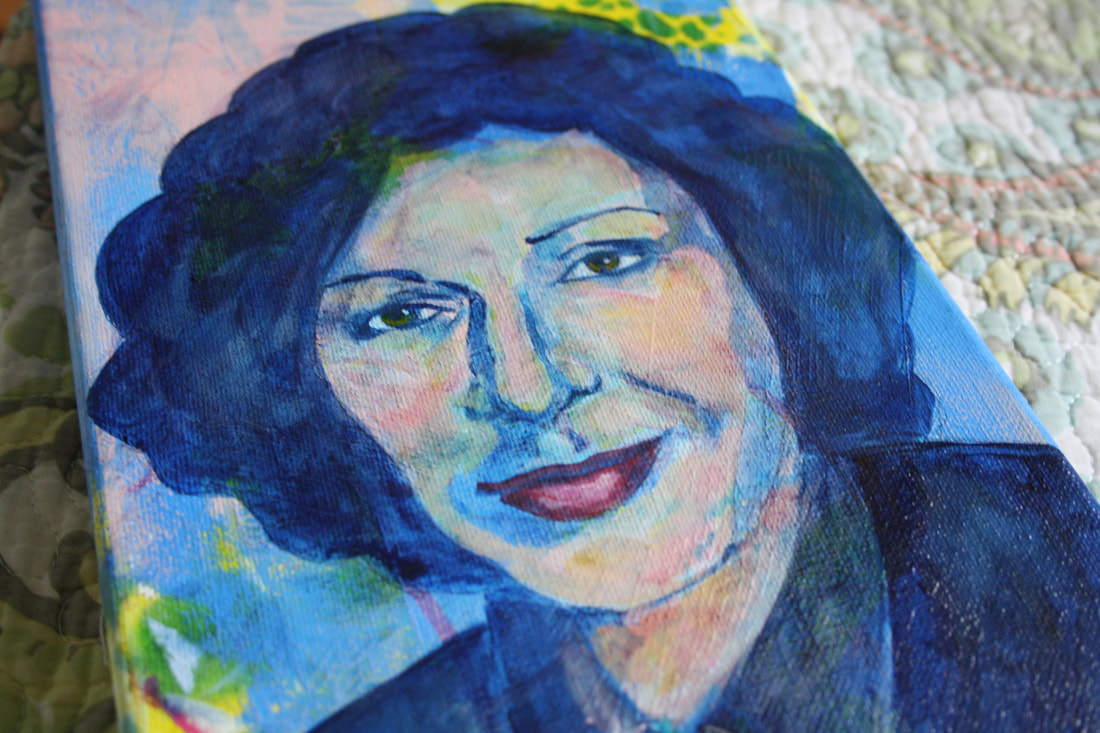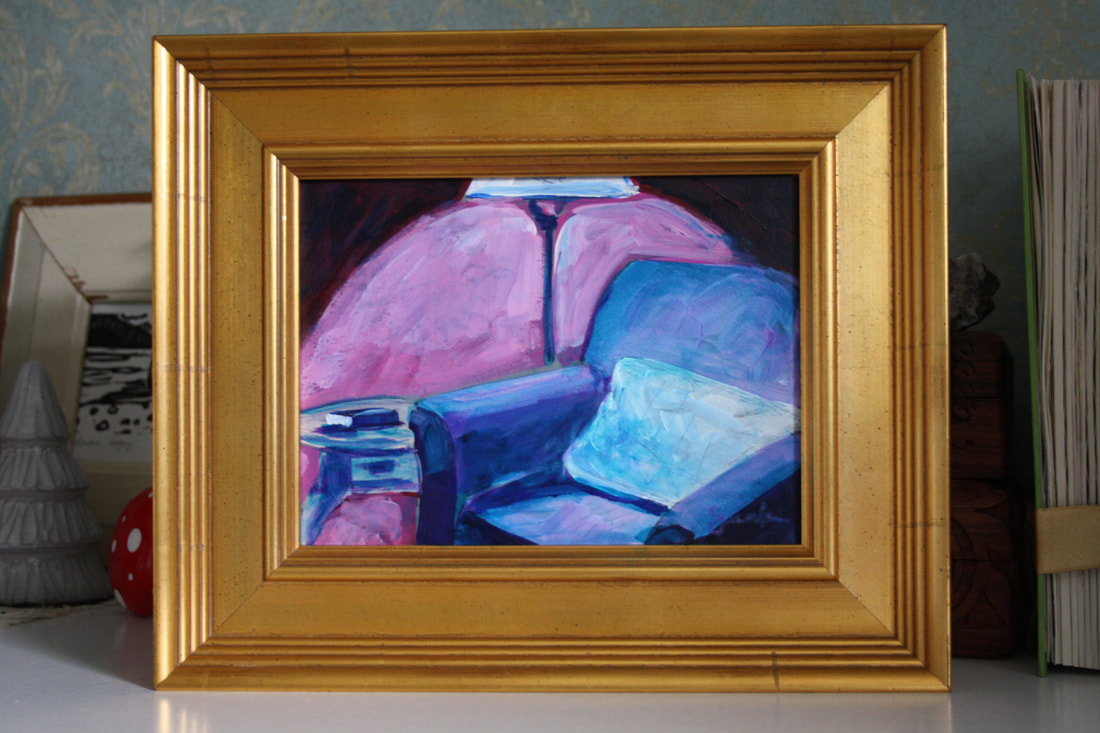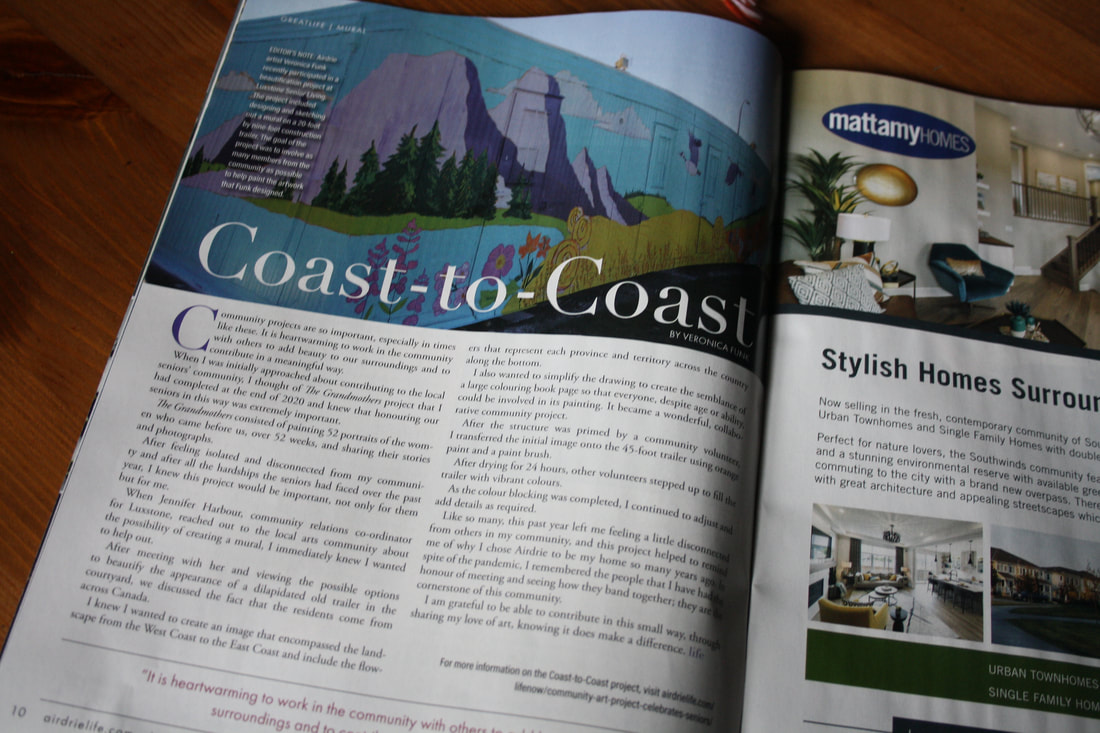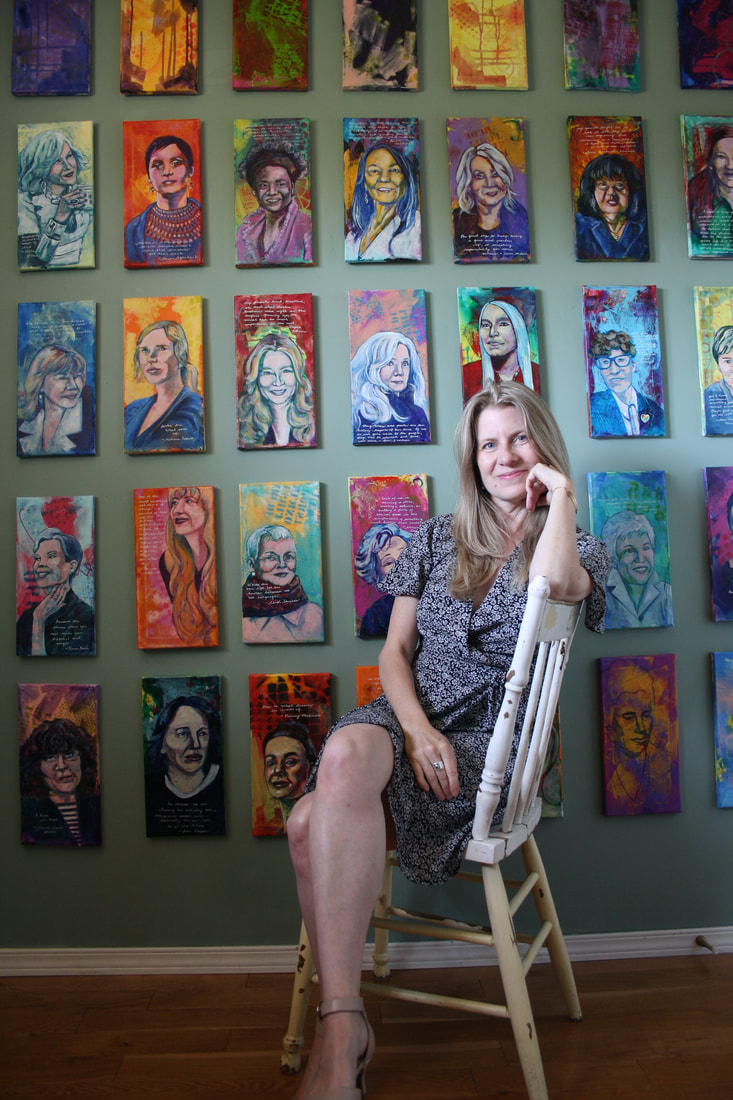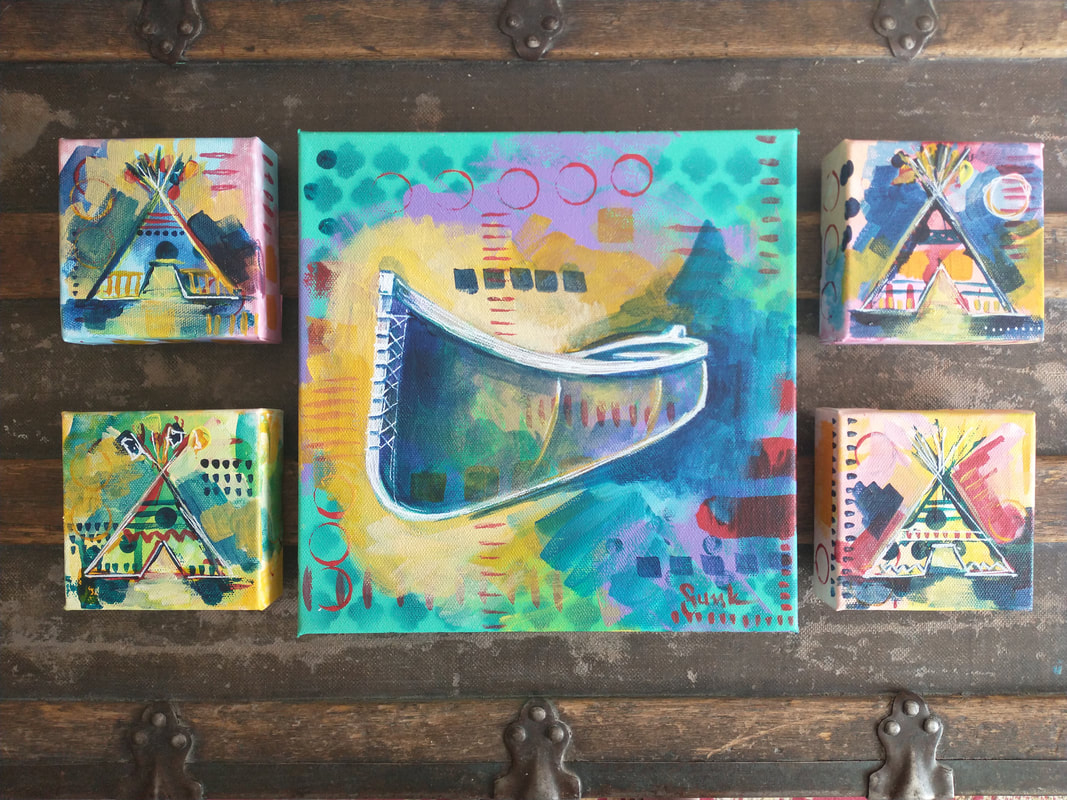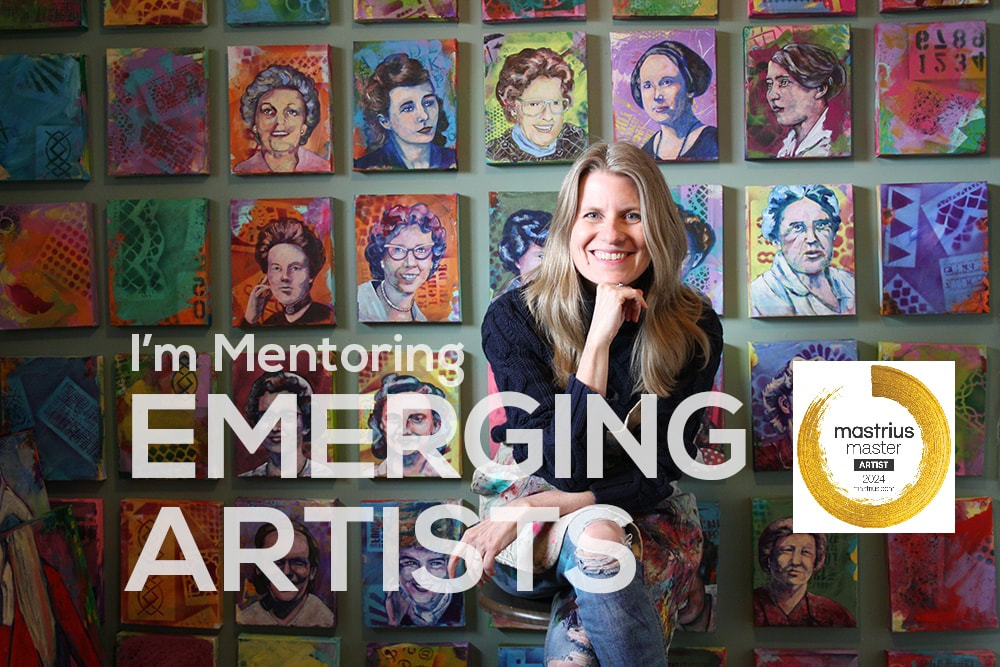|
The People's Poetry Festivat opening at LOFT 112 located at 535 8 Avenue SE in Calgary, Alberta will take place on October 1 at 7-10pm. Due to current regulations, tickets for attendance have to be arranged in advance here. Everyone is welcome.
Loft 112 Regular Hours: Thursday-Friday 4-7pm, Sunday noon-4pm I don't care if I'm understood. I just don't want to be misunderstood. Barbara Frum’s name will forever be associated with the CBC. Indeed, the celebrated journalist and broadcaster enjoyed huge popularity, first as one of the original radio hosts of the magazine show As It Happens, and later and as one of the founding cohosts of CBC TV’s The Journal.
The Niagara Falls, NY-born Frum studied history at the University of Toronto, where she began freelance work in radio and magazine writing. One of her first regular gigs turned out to be fortuitous: in 1971, she began interviewing newsmakers on As It Happens, the fledgling radio show that often took unusual angles on current events. With her sardonic wit and sharp intellect, Frum soon became an audience favorite. She remained with the program for 10 years, until she departed to help launch The Journal, a program that would make her face as recognizable as her voice had already become. The Journal was a way for CBC to enhance the weeknight broadcast of The National. On Jan. 11, 1982, The Journal would debut at 10:22 p.m., with Frum and Mary Lou Finlay as cohosts. The show would touch on any and all manner of Canadian life, or delve into international affairs through a Canadian lens. After the first year, Finlay would move on, with Frum left as the sole host. Frum was the iconic face of a program that a generation of Canadians will remember for its depth and focus. For nearly a decade, Frum interviewed countless newsmakers and celebrities – from Canadians like Margaret Atwood to global leaders such as Nelson Mandela – all the while keeping her own political views private. When asked about her mother’s politics, Linda Frum (herself a journalist) suggests that her mother may have started with more liberal-centrist views, but became more conservative as she grew older. ‘[My mother] had a high sense of calling, and she was intellectually fearless,’ says Linda Frum, who in 1996 would pen a critically acclaimed book about her late mother called Barbara Frum: A Daughter’s Memoir (Random House). ‘She worked in journalism without an agenda,’ says her daughter. As well as her daughter Linda, Frum spawned another journalist, David, a National Post columnist. Barbara Frum’s peers at the CBC recall someone whose professionalism was matched by her humanitarianism. ‘I recall her incredible generosity,’ says Ruth-Ellen Soles, who worked as the publicist for The Journal for its entire 10-year run. ‘She was constantly helping people. When one of our coworkers had a wife who was terminally ill, Barbara paid for their dream: to take one last trip away together. We only learned about her kindness later – she wasn’t doing it for recognition.’ As well as keeping her politics private, Frum also kept her leukemia under wraps. At one point, she was given six months to live. She would succumb to the illness 18 years later, on March 26, 1992. ‘Barbara had a way of reaching out to people,’ recalls Soles. ‘She was incredible with the viewers and felt it important that all of her mail was responded to.’ Frum was made an officer of the Order of Canada in 1979, and the atrium in CBC’s Toronto building has been named in her honor. ~ Matt Hays, Playback The top image is my re-visited painting, the bottom is the original. I've been extremely busy since beginning two art history classes: 'Memento Mori' focuses on death + art and 'Modernims' on the effect of culture and society on art. Love them both but, I have to admit it has been a bit busy as it wasn't expected (I was supposed to be starting in January). Along with mentoring artists through LevellingUp and renovating our home, I have been a bit overwhelmed, to say the least. But in a good way. So, instead of doing some of the things I should be doing, I decided to re-visit this painting I created last year. It never quite sat well with me so I added some scumbling and glazes and now I feel as though it looks richer, less flat, and much more interesting. Maybe now I can get back to my studies. :)
The live auction for the Airdrie Food Bank fundraiser is on September 20-26. This is one of the Food Bank's biggest annual fundraisers and is even more important after the past 1 1/2 years we've experienced. Tob bid on one of the beautiful serving bowls, please visit here.
It sure helped to break the isolation and once you don't feel isolated by a language, your outlook changes. And so from that point on, the world looks different. Chantal Hébert wasn’t ready the first time she arrived at Parliament Hill as a news writer in the fall of 1977. Her press card said Radio-Canada, but amid all the balding, wrinkled white men, she feared she was too much of a “baby face.” She was 23 at the time. “I felt like I suddenly landed in my parents’ living room,” she remembers. “Everyone looked years older than me.” She handed in her resignation three months later and returned to Toronto to cover current affairs for the French network. But Hébert was back to Ottawa in 1986 unintimidated.
Even still, today she shyly observes the rest of the parliamentary press gallery folks from behind a limestone pillar in the foyer outside the House of Commons Chamber. Camera operators and producers position their equipment as they prepare for the scrums. Everyone seems frantic, but it’s organized chaos—and she’s used to it. Known for being no-nonsense and professional, Hébert dresses the part. No glamorous weather bunny, she wears black cords with a leather belt, a cotton long-sleeved shirt and practical rubber-soled shoes. Her hair is cut like Han Solo’s in The Empire Strikes Back. In a few heartbeats, the place is crowded as anxious reporters and antsy columnists hoping to grab a good quote shove microphones and digital tape recorders in the faces of politicians. Hébert stands back, but continues to pay attention to the routine reporting around her. “I already got what I need,” she says with a smile, her arms crossed. She reserves her questions for private interviews. By her own admission, she’s not a team player and doesn’t pretend to be one, straying from the pack and passing on drinks with the gang after deadlines. “Don’t people have families?” she wonders. Hébert prefers a more humble approach than the glory-seeking that afflicts some columnists, the ones who are entertainingly opinionated, though not always as thoughtful. That may mean sacrificing a higher public profile, but she says that doesn’t matter to her anyway. Besides, now 33 years into her career—and with her hands full as a national affairs columnist for the Toronto Star, a guest columnist for Le Devoir and a regular panelist on CBC’s The National and Radio-Canada’s Les Coulisses du Pouvoir—Hébert has never enjoyed so much respect in political and media circles. “She is the most influential journalist in the press gallery right now,” says pollster Allan Gregg, who appears with her on the CBC panel. “When she says something, when she writes something—English and French—all her colleagues pay attention.” Born into a francophone family in Ottawa, raised in Hull and educated at York University’s Glendon College in Toronto, Hébert began reporting from Queen’s Park for Radio-Canada in late 1979. “I didn’t know I wanted to cover politics,” she says. “I just wanted to be a journalist—and I didn’t have any lofty ideas of being a columnist or a foreign correspondent. I just wanted to work in the business and see where it took me.” After her first brief stint in Ottawa, she continued to work for Radio-Canada from Toronto covering education, francophone affairs and Queen’s Park. Three years after returning to Ottawa, she became the parliamentary reporter for Montreal’s Le Devoir. In 1993, she moved over to La Presse to be bureau chief and later a columnist, but returned to The New England Journal of Medicine with her current guest column in 1999. Despite Hébert’s rising popularity in Quebec, most of English Canada still had no idea who she was, even after she began appearing on CBC’s Sunday Report in the late 1980s. “She wasn’t really a household name at that point,” Paul Wells of Maclean’s remembers. “And it actually took several years for her to become one.” During the debate over the Meech Lake Accord in 1987, her colleagues finally noticed how well she knew and understood Quebec political culture. Later, Wells worked about 100 feet away from Hébert in Ottawa’s National Press Building and the two had short morning discussions about premiers and politics. The conversations weren’t long, he says, “but by the end she’d say something smarter than I ever could have.” While covering the 1988 election campaign, Hébert—who’s one of five children and has two of her own—spotted an error in the Liberals’ childcare plan. When David Lockhart, the party’s policy advisor, tried to explain the proposal to reporters, Hébert ended up explaining it to him. “Oh,” replied Lockhart. The incident not only embarrassed the Liberals, it impressed the other members of the press gallery. “This led to one of the biggest debacles the party faced in the election campaign,” says Keith Boag, The National’s chief political correspondent. “She’d done her homework, she knew what the questions were and she was able to bring other reporters along with her.” One reporter who knew her was Wendy Mesley, then a CBC parliamentary correspondent, who respected her “as being perhaps the best reporter on the Hill.” She adds, “I trust everything that she writes.” Mesley was impressed enough to suggest her for the Sunday Report panel, and Hébert ended up appearing on it occasionally. “You could tell from the get-go that she was good—and that she was going to be really good,” says Peter Mansbridge, who hosted the show. Years later, he made her one of the originals on the “At Issue” panel in 2001 and now calls Hébert the group’s lynchpin. Younger members of the press gallery also look up to her. Kady O’Malley, Ottawa correspondent for macleans.ca, reads Hébert faithfully. “No one ever wants to disagree with Chantal,” she says, “because you just assume you’re going to be wrong.” Though Hébert and one of her two sons (and his girlfriend) live in Montreal’s Côte-des-Neiges neighbourhood, the boys’ father lives in Toronto, where he works in television production. “We have an unconventional relationship,” she says, “but yes, we see each other and we do family things.” Spending time with her family is far more important to her than carousing with colleagues. Early in her career, more experienced journalists told Hébert she wouldn’t make it as a political reporter if she didn’t put her hours in at the bar or join the press club, but she never gave in to the peer pressure. Wells, though, can recall one time she went out with the rest of them: during the 2004 election campaign. Trays of Alexander Keith’s floated from the bar to tables filled with journalists in the Lower Deck, a popular Halifax pub, and Hébert was preparing to pack it in for the evening. “She was being Chantal, a bit of a stick in the mud,” says Wells. But then the Top 40 music stopped and a band playing Stan Rogers songs took the stage. Hébert plunked herself back down, ordered another round and sang along with the band. She might have still been there when he left, he thinks. “It was a side of her we almost never see. It was a very un-Chantal moment.” But Wells didn’t know her before age toned down her wilder side: “I wasn’t always 53,” she admitted last fall. When she was younger she attended concerts by groups such as The Who and Led Zeppelin, enjoyed vodka in high school and hitchhiked. “I was dangerous,” she says with a smirk, but won’t go into detail about it. She’s never smoked pot, though. Now, she sticks to blasting Mozart and other classical music in her office while writing her columns. Hébert’s office in the National Press Building across the street from Parliament has a door, because Star columnists and bureau chiefs get doors. It’s very simple inside: posters of French movies, including La Femme Nikita, cover most of one wall and she’s tacked up a few dog-eared photographs from a kayaking trip with colleague Michel Auger. There’s also a laminated plaque with a picture of Hébert and Serge Chapleau, the cartoonist for La Presse, from when she hosted La face cachée de la une, a news show on Montreal’s Télé-Québec, from 1999 to 2001. A small television on the end of her desk broadcasts the House of Commons proceedings. She makes it to Ottawa at least a couple of times a week. Mondays are usually her quietest day, but she’s meeting a source at 7:30 tonight and Hébert is ahead of her game: she has time to pick up her snow tires for her Mercedes-Benz. She bought the used car, a step up from her last one, a Subaru, with the money she earned from her first book, French Kiss: Stephen Harper’s Blind Date With Quebec. And yet, she claims not to care much about the status that comes with driving luxury wheels. “I don’t like money very much,” she says, “and I don’t buy stuff.” To write her autopsy of the 2006 federal election, Hébert took two months off everything and rotated writing shifts between her home and her cottage in the Laurentians. Her ability to break down big political issues and translate them into simple, coherent summaries in her columns is just as clear in French Kiss. Quill & Quire gave it an excellent review. Dan Rowe wrote: “Of all the books that have already been written about the Conservative Party’s 2006 electoral breakthrough, Chantal Hébert’s French Kiss is the most useful to understanding not only Stephen Harper’s victory but the circumstances that helped bring it about.” Other critics, though, felt it read too much like a really long column or a collection of them in book form. “I expected more, and better,” wrote a disappointed William Johnson in a Sunday Report and Mail review. “The book is disjointed in its organization, leaping about in time and topic, without any apparent organic plan … sweeping declarations are not enough when careful analysis goes lacking. The book is not up to the reputation of its author.” That reputation was part of the appeal for John Honderich. When he was publisher of the Star, he wanted to pair two unique voices from Ottawa—an idea he got while working in Washington, where newspapers have several columnists—and in 1999, he chose Hébert and James Travers. More complementary than antagonistic, they offer different perspectives and build on each other. “She writes a good column; I try to,” says Travers. “It’s good healthy competition.” Honderich considers hiring Hébert one of his greatest accomplishments at the paper. “She has an absolutely first-rate mind and she’s far better than the current state of column writing.” That may sound like little more than home team favour-itism, but when This Magazine graded political columnists on its blog in 2004, Hébert topped the list. She received an A+ and comments worth sticking on her fridge: “She’s easily the best political writer in the country right now, in French and English,” wrote Andrew Potter, now a columnist with Maclean’s. (Andrew Coyne, then at the National Post, received a B+, while the Globe’s John Ibbitson, who’s now in Washington, earned a B for being unsentimental.) Her high rating aside, Hébert relies more on reporting and background knowledge than opinion, so her columns sometimes read more like news reports. She makes no apologies for her approach and her colleagues back her up. “She’s not dull,” says the Globe’s Christie Blatchford. “I find her stuff to be so informed,” she says. “She says something is true—I believe it.” Blatchford also respects Hébert for not being one of those columnists who’s so into the politics that nobody outside of Ottawa can understand her. On November 23, 2007, for example, her Star piece began: “Twelve months after Stéphane Dion’s Liberal leadership victory, bewilderment about the result has turned to widespread consternation.” It’s all high praise from a columnist whose style is such a stark contrast from Hébert’s. Blatchford puts more of her personality into her work, provoking an instant reaction from her readers—they either love her or they hate her. But they all read her. As John Barber, city columnist for the Globe, says, “You have to have an original perspective and a distinct voice.” But Hébert prefers taking an objective stance and believes columnists need to do more than just outrage their readers. After all, most Canadians with an affection for politics want more than funny hats and loud opinions—they’re looking for insight and thoughtful analysis. “I’ve made enough influential enemies,” she says. “But I don’t think I’m being too safe. I don’t think the notion of journalism has to do with making people angry.” That’s just fine with Alan Christie, national editor at the Star. “People who write shock columns are a little more controversial because they write things that are nasty about individuals,” he says. “We don’t allow that to happen anyway.” Riling up readers may not be part of the job, but these days, marketing is. A higher profile is good for the columnist and the papers she writes for, and Hébert is not afraid of fame or being recognized. In fact, she invites it by regularly appearing on television in both official languages. Even when she must contend with fellow panelists who disagree with her, she avoids stepping on too many toes. “She would tend to be more sympathetic towards the Quebec nationalist take on things than I would,” notes fellow “At Issue” regular Coyne, but the chemistry between the two only makes it more fun to watch. Still, her columns are what matter most. They may not be water-cooler conversation outside of the political sphere in English Canada, but influence is better than notoriety anyway. Besides, she has enough fame in Quebec. When Liberal leader Stéphane Dion spoke at a luncheon in Montreal in 2007, many in the crowd were more intrigued by Hébert, who was standing at the back of the room. “Everyone wanted to talk to her, everyone wanted to shake her hand,” remembers CBC parliamentary reporter Susan Bonner. And as Travers says, “Chantal Hébert is not Paris Hilton—whatever fame she has is entirely deserved.” ~ Chloe Tse, Review of Journalism I am thrilled to have been selected as one of eight artists to be paired with eight poets for the People's Poetry Festival in October. The poem is titled 'Lost Love' by Angelica Ng...the words immediately brought an image to mind which meant changing the background I had begun earlier to these warmer colours...excited to be working towards the completed image. The exhibition will be held October 1-15 and the opening will take place on October 1, 7-10 pm Loft 112, 535 8 Ave SE, Calgary, Alberta. After working for many years at our local public library, and being an avid reader, I am so excited to be taking part and looking forward to a live exhibit with readings once again.
In the current issue of AirdrieLIFE magazine, I shared the value of creating a mural in order to beautify a local senior's complex and to work in collaboration with the community. In these challenging times, and after completing 'The Grandmothers' project in 2020, I knew that contributing to the happiness of our seniors was paramount, especially since it is our senior population that has been so highly affected. The article is available online here.
...[bees] create the most beautiful environment that [I have] ever seen. You have to be an artist to be able to do that. Honey bees have helped our ecosystems grow and proliferate into what our world is today. According to the United Nations Environment Program, over three-quarters of the world’s crops are dependent on these pollinators. The effects of pesticides and habitat loss have resulted in a rapid decline in the bee population. With the collaboration of thousands of honey bees, Canadian sculptor, Aganetha Dyck is able to showcase the natural works of these beautiful creatures in her numerous sculptures.
Born in 1937 in Winnipeg, Manitoba, to a Mennonite family, Dyck was heavily influenced by the critical literature that was surrounded by the rural lifestyle. While studying at Prince Albert Community College in Prince Albert, Saskatchewan, she gained various skills such as pottery, art history, Salish weaving and batik. To further her studies, she later went on to study at the University of Winnipeg for art history. However, she did not get into the art field until later on in life due to the responsibilities she held in her family. Dyck’s work in her early days followed the central theme of transforming domestic activities into fine art using everyday materials that could be found at home. However, it was not until 1989 where she began her journey of creating her infamous pieces with honey bees. These pieces were created by renting out beehives, placing objects into the beehives and allowing honey bees to form a honeycomb around the objects - something which can take many years to produce. She also had the help of entomologists and beekeepers when making these sculptures. Through her appreciation of the natural art of honeycombs produced by these insects, she expresses in an interview with CBC that “[bees] create the most beautiful environment that [I have] ever seen. You have to be an artist to be able to do that”. The more she got to work with the captivating honeybee community, the more she realized how important they are to the world. With over 95% of the wild honeybees beginning to disappear, she worries about the important relationship these creatures have with us, humans. With her work passionately driven to bring awareness to these beautiful insects, it contributes to the United Nations Sustainable Development Goal on Life on Land. Due to unforeseen circumstances in 2009, Dyck developed a severe reaction to a bee sting that left her no choice but to have less contact with these creatures. She continues to advocate for bees and encourages everyone to do the same. Ever since the late seventies, her work has been showcased throughout countless solo and group exhibitions around the world. ~ Tiffany Chan, ArtsHelp The 'Extraordinary Women' project has now come down from my old studio wall and the new studio downstairs is now being renovated. I was sad to remove this project but a friend suggested that I put a photo of the project up on the wall near my drafting table to keep me inspired and motivated. Love that idea. I know this next month or two will be exhausting as we re-do our space but I am so looking forward to hanging the work in my new studio.
These paintings are heading to a Counselling office in a school and I couldn't be happier. They remind me of my first art classes which were held in a tipi. It was a summer camp in my northern town and we foraged in the forest for materials to add to our pieces. We were weaving, painting, making candles by diffing little divots in the sandy grout, adding gathered items and melting wax over a fire. Then we'd make bannock for lunch. It was one of the many wonderful experiences I had growing up in the north.
|
|


